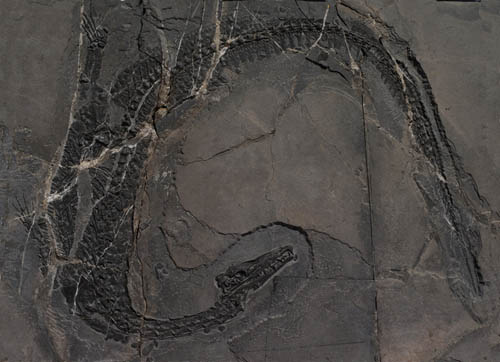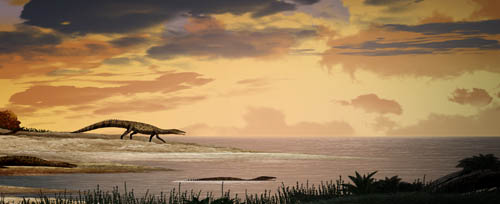Archosaurs are sometimes called archosaurs, which originally means "leading reptiles or ruling reptiles". This group includes the familiar dinosaurs, pterosaurs and crocodiles. fossils and modern animals. Before the earliest dinosaurs appeared, various primitive archosaurs were already very prosperous reptiles on the earth. The genetic relationships between many groups are intricate and have always been a hot topic of debate in the field of paleontology. It has long been believed that archosaurs, with the exception of some crocodiles, were basically terrestrial animals. It was not until 2006 that researchers from the Institute of Vertebrate Paleontology and Paleoanthropology, Chinese Academy of Sciences, discovered marine-type early archosaur fossils for the first time in Pan County, Guizhou. . Recently, the research team discovered this type of fossil again in Fuyuan area of Yunnan, and the international journal "The Science of Nature" (formerly Naturwissenschaften) recently published the relevant results online.
It is reported that the fossil was discovered in the limestone formation of the middle Triassic period. The nearly complete skeleton represents a brand new semi-aquatic archosaur. This animal is about two meters long, covered in armor, has a thick neck, a long tail, sharp teeth in its mouth, short, strong and webbed limbs. It was a ferocious predator in the prehistoric coastal marine environment. Research shows that this animal belongs to a very primitive archosaur and is closely related to a rare North American group. Fossils show that as the backbone of reptile evolution, archosaurs began semi-aquatic marine life at a very early stage in their history, and at the same time further expanded the understanding of the so-called "Mesozoic marine reptiles".
The newly discovered fossil has been named Litorosuchus somnii, which means "crocodile-like animal on the beach in dreams." According to researcher Li Chun, the leader of the project, one night not long after the fossil was discovered, he saw a huge crocodile-like animal walking on the seaside in his sleep, hence the name.

Figure 1 Fossil specimen of Litorosuchus somnii (photo provided by Li Chun)

Figure 2 "Prehistoric giant crocodile in dream": Restoration picture of Litorosuchus somnii in dream (painted by Chen Yu)
animal tags: Triassic crocodiles fossils prehistory
We created this article in conjunction with AI technology, then made sure it was fact-checked and edited by a Animals Top editor.